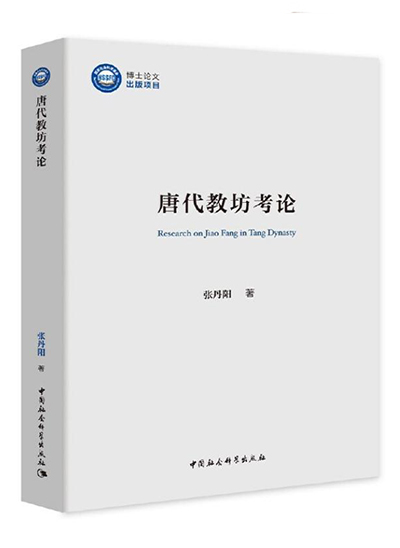Imperial music office in Tang era

Research on Jiao Fang in Tang Dynasty
Jiao fang was the official bureau of court music, which started in the Tang Dynasty (618–907) and ended in the Qing Dynasty (1644–1911). Research on Jiao Fang in Tang Dynasty, written by Zhang Danyang, a lecturer from the School of Chinese Studies at Dalian University of Foreign Languages, focuses on Tang’s jiao fang system, Tang’s jiao fang music, and the relationship between Tang’s jiao fang and literature.
The book runs through the core concepts of “regional-spatial,” “internal-external,” and “synchronous-diachronic” research. It sorts out the structural attributes and evolution of the Tang’s jiao fang system from the central to the local and from inner court to outer court, while analyzing the spatial distribution of and interaction among jiao fang officials, music, and literary activities.
Zhang gives a geographical introduction to jiao fang’s musical institutions, including left and right jiao fang [in charge of folk music], zhangnei jiao fang [in charge of percussion music for military ceremonies], and liyuan [literally Pear Garden, an imperial performing arts and musical academy]. The author carefully inspects the establishment, changes, and mutual relations of these institutions. Concerning the evolution of ceremonial music and folk music, with the growth of folk music jiao fang, the function of inner jiao fang for ceremonial music gradually degraded after the Tianbao period (742–756), and eventually withdrew from the historical stage.
In terms of Tang’s jiao fang officials, the author explains that “jiao fang shi” was always a part-time post, whose responsibility was mainly to deal with daily affairs of jiao fang. After the mid-Tang Dynasty, “duzhi” appeared among jiao fang officials, which had official and folk dual identities and showed the trajectory of changes in jiao fang officials. The author chooses Mei County of Shaanxi and Wenxi County of Shanxi to exemplify local jiao fang officials and musicians, proving the familial tendency of jiao fang officials with extensively collected data.
The author adopts the research methods of spatial geography to review connections among music, literature, geography, politics, and culture, such as from the perspective of specific spatial locations, exploring the nature and connection of various music institutions in the Tang Dynasty. In the context of extremely scarce literature on jiao fang, such research proceeding from the stability of regional space is a feasible way to open up jiao fang studies.
Hu Kexian is director of the Department of Chinese Language and Literature at Zhejiang University.
Edited by YANG LANLAN